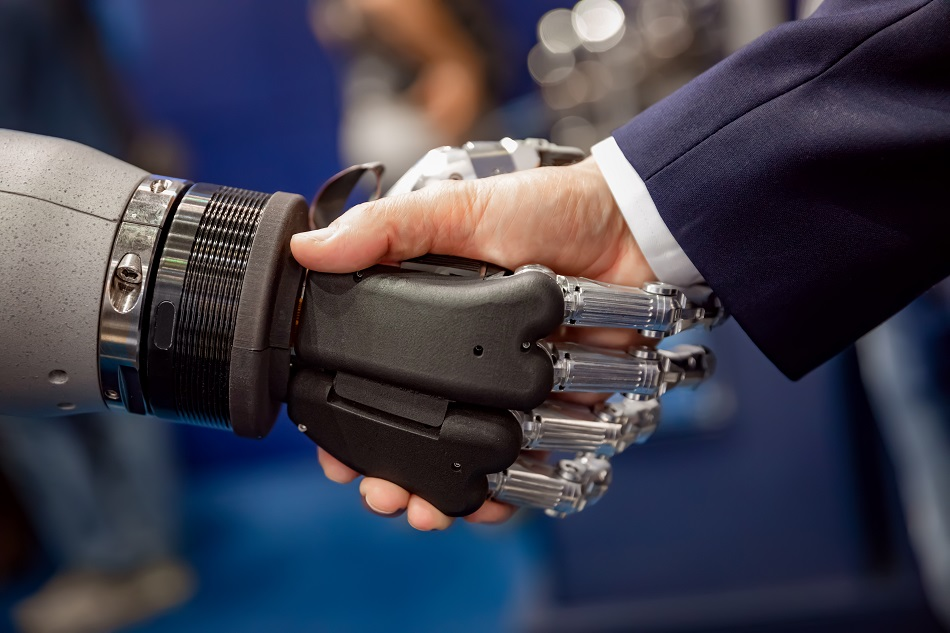
Image Credit: Andrey Armyagov/Shutterstock.com
Human-robot interaction is an area that is seeing increasing attention as research increases the capabilities and potential applications of technology that support human intelligence and artificial intelligence teaming up.
Functional near-infrared spectroscopy (fNIRS) has proven to already be invaluable in this space, and its full applications are yet to be realized. The technique is considered more suitable for enabling the furthering of human-robot interaction than alternative brain imaging methods, such as EEG and fMRI. Research has already seen it be successful in enabling robots’ behaviors to be affected by human cognition, and in evaluating human brain activity occurring during interactions.
The Benefits of Infrared Spectroscopy in Studying Human-Robot Interaction
Research into human-robot interaction aims to create algorithms that support effective interactions between humans and robots. The key to this development lies within the bi-directional exchange of information between humans and robots, with the channels of communication being visual, tactical, and auditory. The brain-robot interface is also now considered as an extra channel of information sharing, allowing robots to access information on physiological activity in the human brain. This information can theoretically be translated into cognitive activity, and therefore could give the robots an insight into human thoughts, intentions, emotions, and more.
While EEG and fMRI are already well-established brain imaging methods that are relied upon by many fields of neuroscience, biology, and psychology, in the setting of human-robot interaction, there are limitations. EEG suffers from poor spatial resolution and signal-to-noise ratio, and fMRI has poor temporal resolution and requires restricted movement of the person.
Infrared spectroscopy provides the solution, combining the benefits of fMRI, such as good spatial resolution and localization, and EEG, such as allowing more movement by the participant and the portability of the equipment. It provides a method that is affordable, portable, non-invasive, and relevant to studying brain-computer interfaces in the field of human-robot interaction.
How it Works
Functional near-infrared spectroscopy is a method that reports changes in the oxygenation levels of blood. In the brain, increased levels of oxygenated blood are related to increases in activity in that area. Used in conjunction with studies that have elucidated the role of specific brain areas, the data can uncover the activity that is occurring in the brain at a certain time.
There several adaptations of the method, but the one most suited to studying human-robot interaction is continuous-wave fNIRS, which reports changes in hemoglobin concentration through relating it to changes in light intensity. Light in the near-infrared range can pass through biological tissue. In continuous-wave fNIRS, an LED or laser light is shone onto the head, where it passes through the skin and skull in a non-destructive manner, reaching the brain. Here it measures the light passing back through to the photo-detector to estimate the amount of oxygen in the blood at a certain point, which is because light passes differently through oxygenated and deoxygenated blood.
Human-Robot Interaction Research
Within human-robot interaction research, fNIRS is used in two main ways. Firstly, it is used as a transducer of cerebral blood flow, and therefore human brain activity, into a signal that has meaning for the robot, be it a command or action. The second is that the method is used as an evaluation tool, where fNIRS makes offline data analyses on the information collected about cortical activity. Investigations using this sort of application may be looking at research areas such as decision-making, sustained attention, or robot-assisted therapy.
Further research using infrared spectroscopy in developing human-robot interaction is likely to see the development of this technology in more applications.
Sources and Further Reading
Disclaimer: The views expressed here are those of the author expressed in their private capacity and do not necessarily represent the views of AZoM.com Limited T/A AZoNetwork the owner and operator of this website. This disclaimer forms part of the Terms and conditions of use of this website.